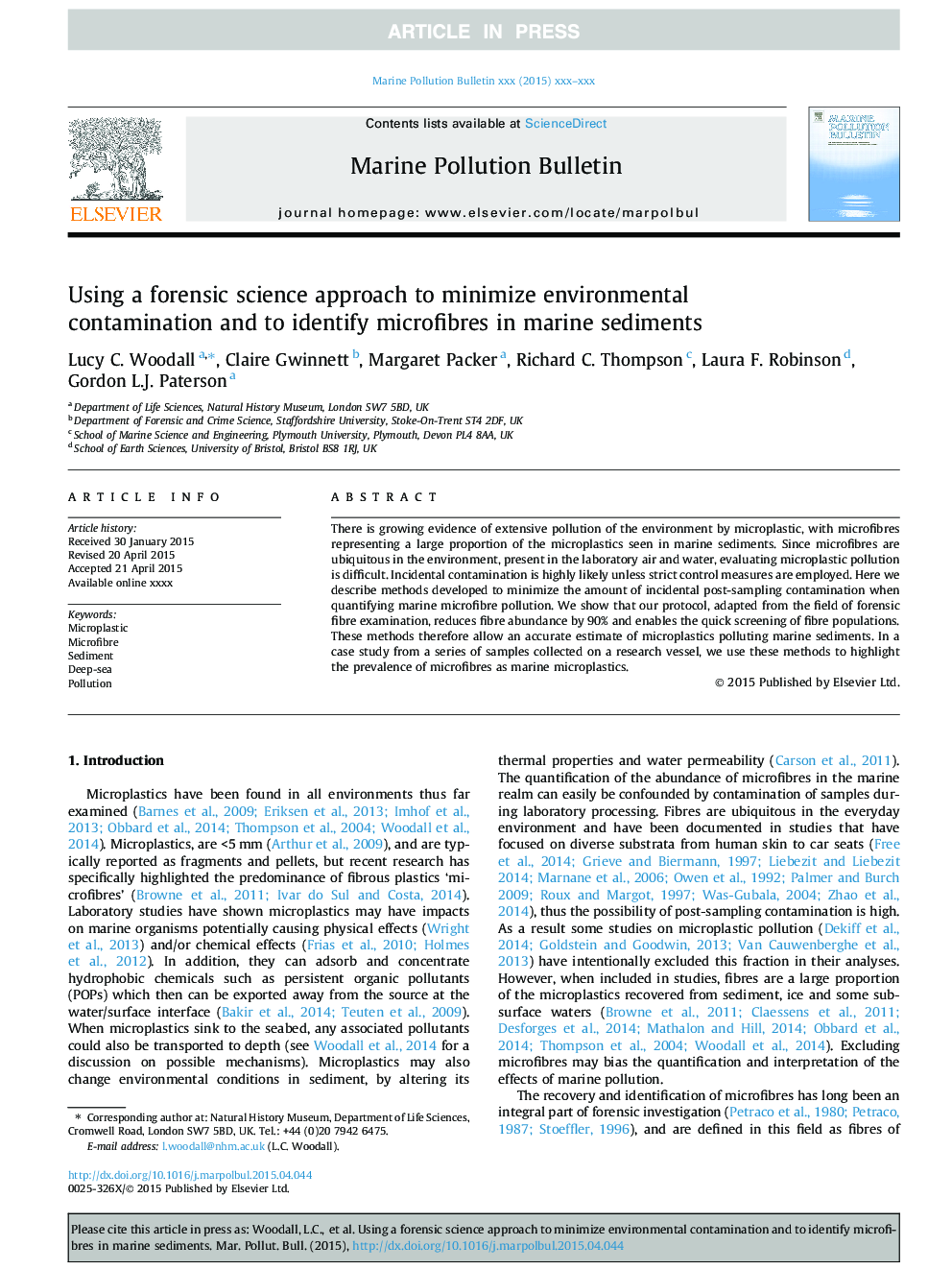| Article ID | Journal | Published Year | Pages | File Type |
|---|---|---|---|---|
| 6357273 | Marine Pollution Bulletin | 2015 | 7 Pages |
Abstract
There is growing evidence of extensive pollution of the environment by microplastic, with microfibres representing a large proportion of the microplastics seen in marine sediments. Since microfibres are ubiquitous in the environment, present in the laboratory air and water, evaluating microplastic pollution is difficult. Incidental contamination is highly likely unless strict control measures are employed. Here we describe methods developed to minimize the amount of incidental post-sampling contamination when quantifying marine microfibre pollution. We show that our protocol, adapted from the field of forensic fibre examination, reduces fibre abundance by 90% and enables the quick screening of fibre populations. These methods therefore allow an accurate estimate of microplastics polluting marine sediments. In a case study from a series of samples collected on a research vessel, we use these methods to highlight the prevalence of microfibres as marine microplastics.
Related Topics
Physical Sciences and Engineering
Earth and Planetary Sciences
Oceanography
Authors
Lucy C. Woodall, Claire Gwinnett, Margaret Packer, Richard C. Thompson, Laura F. Robinson, Gordon L.J. Paterson,
